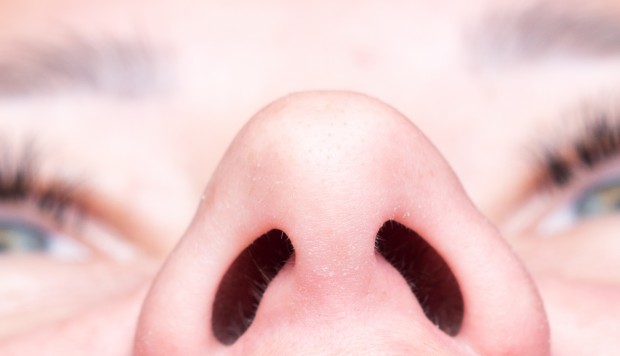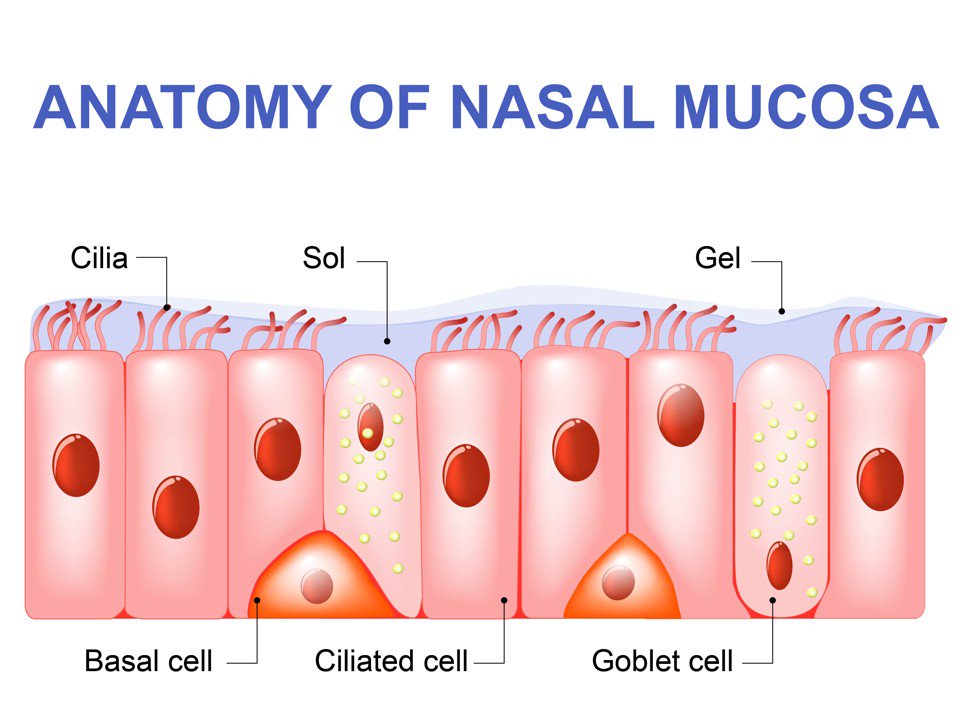A nose is much more than something to smell with. Photo: Shutterstock
We mainly associate our nose with smell, and with 400 scent receptors located in the nostrils, noses can identify over a trillion smells – from the tempting wafts of home-made bread to the stink of public toilets.
There is evidence to suggest that women are better than men at identifying odours, perhaps because the area of the brain dedicated to processing smells is 50 per cent larger in women. Women also develop a hypersensitive nose when pregnant, which may explain the unusual cravings some experience, since 80 per cent of what you taste is determined by its scent. One man – Dutch winemaker Ilja Gort – has such a finely tuned sense of smell that he has reportedly insured his nose for US$8 million.
Researchers at Utrecht University in the Netherlands discovered that we can detect emotions – such as fear and disgust – by sniffing out the chemical signals people emit. Our noses are also responsible for detecting the pheromones the opposite sex emit, which indicate sexual arousal.
One experiment – conducted by Claus Wedekind in 1994 – suggests that we may subconsciously select partners through smell. This is because we can identify through scent that someone has different genes to our own, meaning children we produced together would have strong immune systems. Smelling our way to love, perhaps?
The nose also serves as a vital filter, warmer and humidifier for the air we breathe – between 18,000 and 20,000 litres per day. On a cold day, it is better to breathe through your nose than your mouth, as your nostrils warm and moisturise the air before it reaches the lungs.
Harmful bacteria is prevented from entering our body through the production of mucus, which lines not just the nose, but also the sinuses, throat, lungs and gastrointestinal tract to keep these areas moist.
Each person produces almost a litre of this slimy substance every day, which we swallow. When you’re ill, the nose and sinuses produce nearly double the normal amount of mucus because, although disgusting, this thick liquid contains chemicals which help keep you healthy.
Another way the nose rids the body of unwanted particles is through sneezing; a single sneeze expels about 40,000 droplets of liquid and 100,000 germs, which can travel at up to 161 kilometres (100 miles) an hour. One in three people sneezes when looking into a bright light; some people sneeze when they have sexual thoughts and when they reach orgasm, though scientists are unsure how these two things are related.
How we sneeze is in our genes. Dr Neil Kao, an allergist in Greenville, in the American state of South Carolina, says: “Since tissues are very similar within families, all muscle actions, including smiling and laughing, will be similar, too.”
Our noses all do the same job regardless of their shape and size. Writing in the Journal of Craniofacial Surgery, Dr Abraham Tamir notes there are at least 14 different nose types. He deduced this from studying 1,793 noses, among them the fleshy “Einstein” nose (the most commonly found nose shape in the study) and the hawk-like “Barbara Streisand” nose.
Nose shape has for centuries been considered an important part of our perception of beauty – and character. The ancient Greeks and Romans marked a strong, long nose as an indicator of power and strength.
Nowadays, rhinoplasty – the medical term for a nose job – is among the five most common cosmetic surgery operations performed. The first such procedure was performed 2,500 years ago in India; back then, the surgery was done to repair noses damaged in battle – a reason less commonly heard today.
In China, women increasingly undergo surgery to achieve a more prominent “Western” nose. A study by Russian psychologist Alfred Yarbus showed that while people from Western cultures tend to concentrate on the eyes when looking at someone’s face, East Asians tend to focus on the nose.
Caroline Blais – who conducted an experiment at the University of Glasgow in the United Kingdom – came up with two theories to explain this phenomenon: one is that, in East Asian culture, it is considered impolite to make direct eye contact for long.
Her second theory is that the way Westerners and East Asians look at the faces of others reflects the way they view the world – with Westerners focusing on the eyes, the most expressive part of the face, in order to analyse the subject’s emotions, while East Asians take a more holistic view, looking centrally so that they can also perceive movement of the rest of the face.
Our nose is more connected to memory than we may realise. Smell is the only one of our senses which is directly connected to the regions of the brain which form memory (the hippocampus) and process emotion and memory (the amygdala).
Smell is also connected to the limbic system, which may attribute emotions to events in our past. This is why a certain scent may trigger memories.
Between sneezing our way back to health, sniffing us out a love partner and forming memories, our noses could even be smelling our way to success.
Source: The human nose: amazing facts about our most powerful organ


 Despite all that the nose can smell, it cannot detect some of the most deadly scents – natural gas and carbon monoxide, for example. Gas companies add methyl mercaptan – a colourless gas with a smell like rotten cabbage – to natural gas to give it a detectable odour, and it is recommended one invest in a home CO detector and change the batteries every six months.
Despite all that the nose can smell, it cannot detect some of the most deadly scents – natural gas and carbon monoxide, for example. Gas companies add methyl mercaptan – a colourless gas with a smell like rotten cabbage – to natural gas to give it a detectable odour, and it is recommended one invest in a home CO detector and change the batteries every six months.











